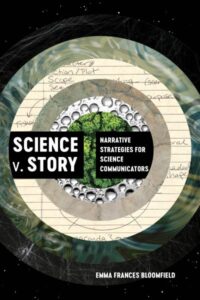 If the CoVid-19 pandemic taught us anything – and I very much hope it did – it taught us that when communicating with the general public about scientific subjects for which there can, given a number of developments and degradations in modern society, no longer be assumed to be a common, or even a rudimentary, level of understanding, the presentation of facts alone is not only useless, it is potentially counter-productive thanks to the abhorrent creation (by a person who shall here remain nameless) of the neologism “alternative facts” that denigrates the very concept of a fact itself.
If the CoVid-19 pandemic taught us anything – and I very much hope it did – it taught us that when communicating with the general public about scientific subjects for which there can, given a number of developments and degradations in modern society, no longer be assumed to be a common, or even a rudimentary, level of understanding, the presentation of facts alone is not only useless, it is potentially counter-productive thanks to the abhorrent creation (by a person who shall here remain nameless) of the neologism “alternative facts” that denigrates the very concept of a fact itself.
The problem is that in a time of crisis, such as a pandemic, there is no time to provide the entire public a remedial education in various fields of science sufficient to make up for generations of insufficient education that would enable them comprehend the information about what was happening, why it might be happening, and what is planned as a response to it. In such situations, as Prof. Emma Frances Bloomfield explains in her new book Science v. Story Narrative Strategies for Science Communicators, it may be more important for those needing to communicate vital information to focus on the structure of the story used to do so rather than every last detail of the science itself.
While not an expansion of her award-winning 2020 book Communication Strategies for Engaging Climate Skeptics Religion and the Environment but a continuation of her exploration into effective ways to bridge our society’s present chasm between proponents of science and skeptics of it, Prof. Bloomfield’s new book Science v. Story examines four very pertinent present-day challenges to science communicators – climate change, evolution, vaccination, and COVID-19 – from the perspectives of their narratives and their counter narratives, to demonstrate how effective story-telling is essential to effective science communication in the modern world. And as this is intended to be a practical book, she also proposes and demonstrates the use of two communication visual mapping tools – narrative webs and narrative constellations – that can be used in the science communication process to make it more likely to yield desirable results.
